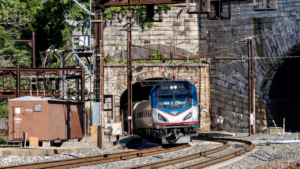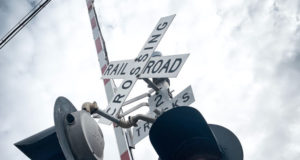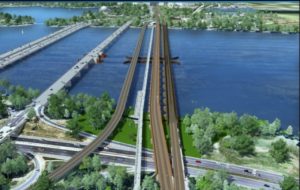Valley Line LRT Bridge Pier Repairs Completed
Written by John Thompson, Canadian Contributing Editor, Railway Age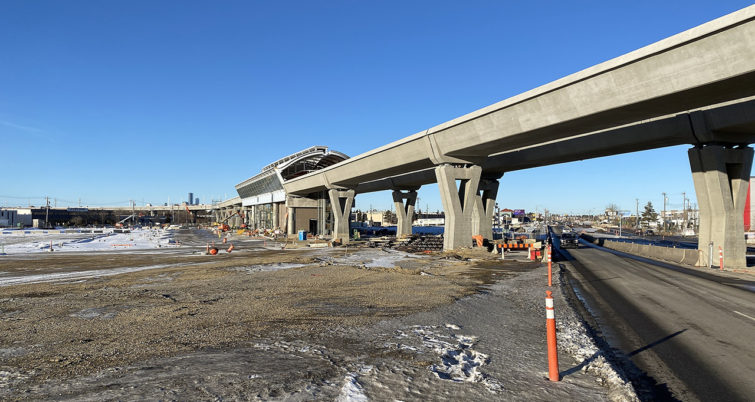
Work is essentially complete on repairing several defective supporting piers on Stage 1 of Edmonton’s new Valley Line LRT.
The piers support two short, elevated sections that carry the line across a highway and a railway line. They utilize thick base structures that branch out into two sections to support the double-track platform. The overall project contractor is TransEd Partners, which will also operate and and maintain the completed LRT line under a 30-year P3 (public-private partnership) arrangement with the City of Edmonton.
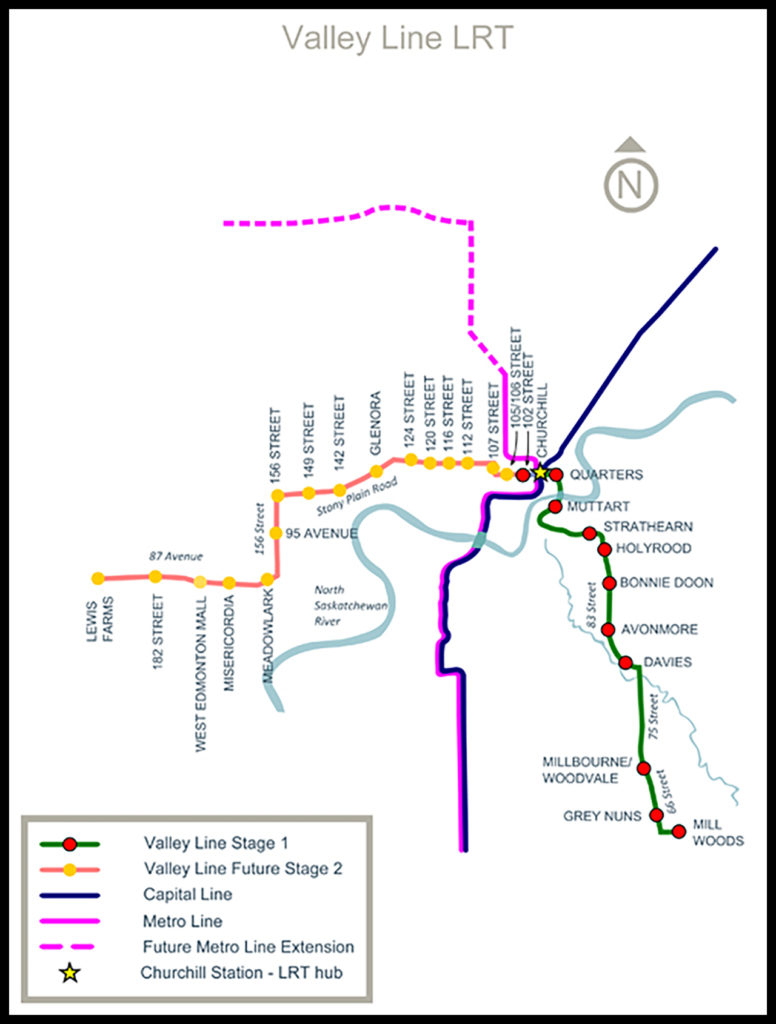
Work began on the LRT project, Edmonton’s first using low-floor vehicle technology, on April 22, 2016. It links downtown Edmonton with the suburb of Mill Woods, 8.1 miles to the southeast. Service is to be provided by 26 Alstom Flexity LRVs, incorporating seven sections, and which are about 150 feet long. There will be 12 stations on the line, whose original budgeted cost was C$1.8 billion.
The DBOM (design-build-operate-maintain) project has faced several delays. Early in the construction program, a large block of concrete was discovered in the North Saskatchewan River, potentially interfering with the building of the new LRT bridge. Removal of the offending concrete was a lengthy and complicated process. Then, the COVID virus struck, resulting in employee absenteeism, physical distancing at work sites and materials shortages and delays.
After several previous missed opening dates, it had been planned to open the Valley Line during the second half of 2022. However, a project inspection by City of Edmonton engineers discovered cracks in 30 of the 45 bridge piers. Consequently, LRV testing on these sections of the line had to be suspended.
TransEd engineers subsequently began detailed analysis work to determine the root cause(s) of the cracks. It was initially thought that they were caused by thermal expansion of the track structure. However, the cause was ultimately traced to insufficient steel reinforcing (rebar) within the affected piers, due to design errors.
The corrections have involved three steps: filling major surface cracks with grout; pouring concrete into the “Vs” of the piers; and encircling the piers, at a crucial point, with steel bracing. Nine of the piers were determined to require only minimal strengthening.
The reinforcing work, whose cost is being borne entirely by TransEd, was substantially complete by January. This has allowed operational testing and commissioning of the Valley Line to resume. However, a new public opening date has not been announced.
The assistance of TransEd is gratefully acknowledged. TransEd Partners comprises Bechtel, EllisDon, Alstom, and Fengate Capital Management Ltd., with Arup Canada and IBI Group.



